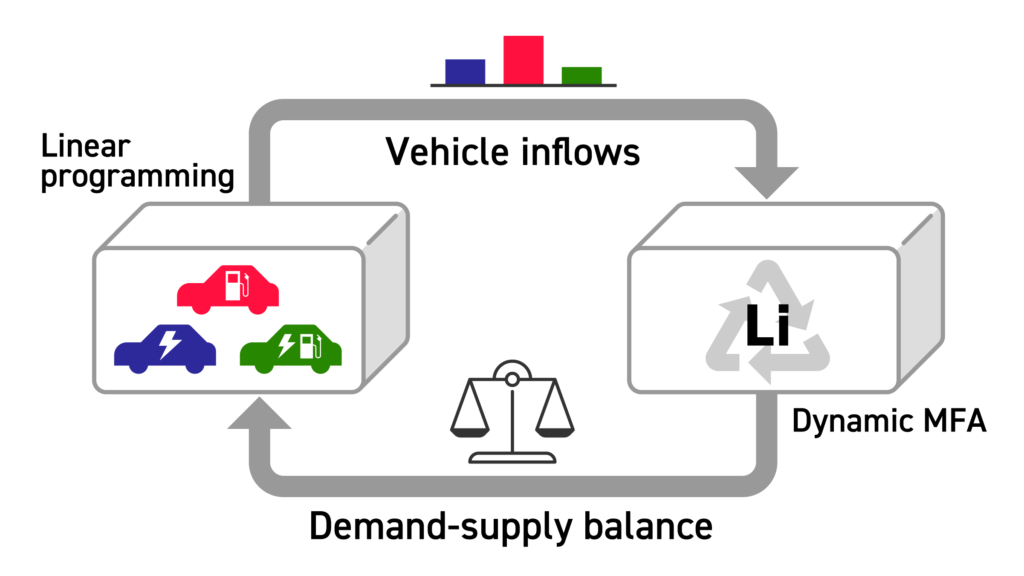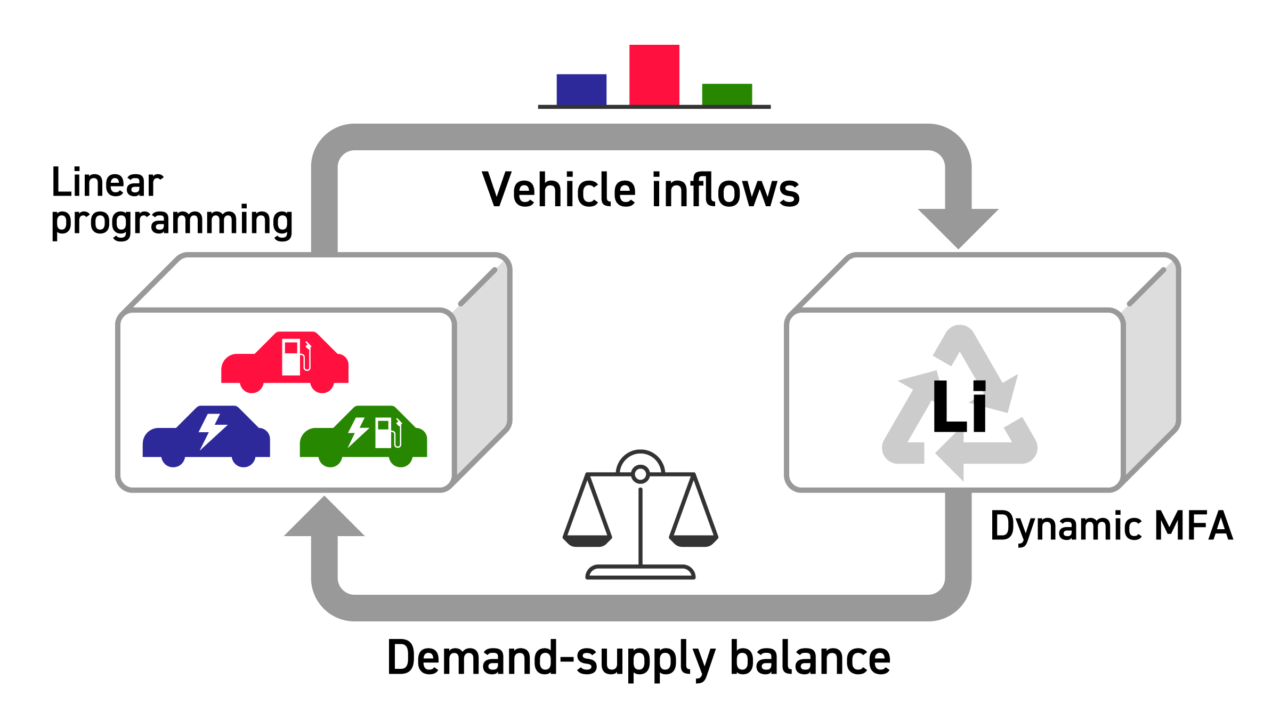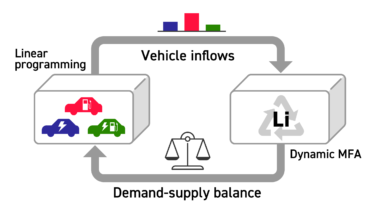
Abstract
Electrification of the transport sector will support its decarbonization, yet significantly change material requirements. This calls for an integrated modeling approach internalizing metal demand-supply dynamics in low-carbon scenarios to support the Paris agreement on climate change and sustainable material circulation. Here we develop a step toward the integrated simulation of energy-materials scenarios by unifying a stock-flow dynamics model for low-carbon scenarios using linear programming. The modeling framework incorporates lithium supply from both mines and end-of-life (EoL) recycling for projected use in electric vehicles on a global basis. The results show that supply constraints, which could become apparent from around 2030 in the case of current recycling rates (<1%), would impede the deployment of battery electric vehicles (BEVs), leading to the generation of an additional 300 Mt-CO2 of emissions for vehicle operation in 2050. Another important finding is that increasing the recycling rate to 80% could substantially relieve restrictions on the introduction of BEVs without requiring primary supply from natural deposits far beyond historical rates of expansion. While EoL recycling is important from a long-term perspective, an EoL-oriented strategy has little effect on the short/medium-term (such as to 2030) lithium demand-supply balance because of exponential demand growth and long living batteries. Importantly, findings in this study emphasize the necessity of tackling climate change and resource circulation in an integrated manner.
Author
Takuma Watari, Keisuke Nansai, Kenichi Nakajima, Benjamin McLellan, Elsa Dominish and Damien Giurco
Journal
Environmental Science and Technology, 2019, 53, 20, 11657-11665 ; Link


